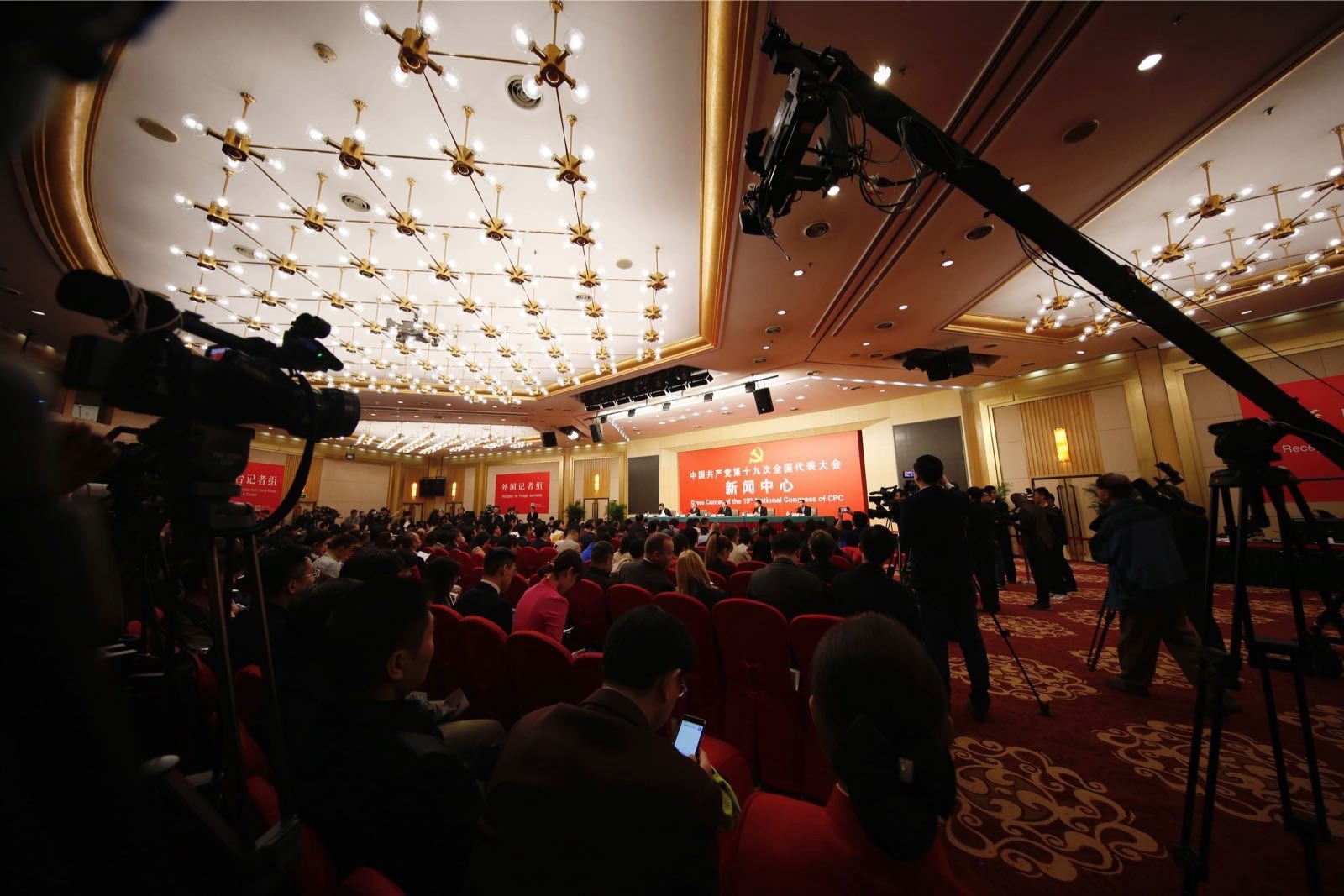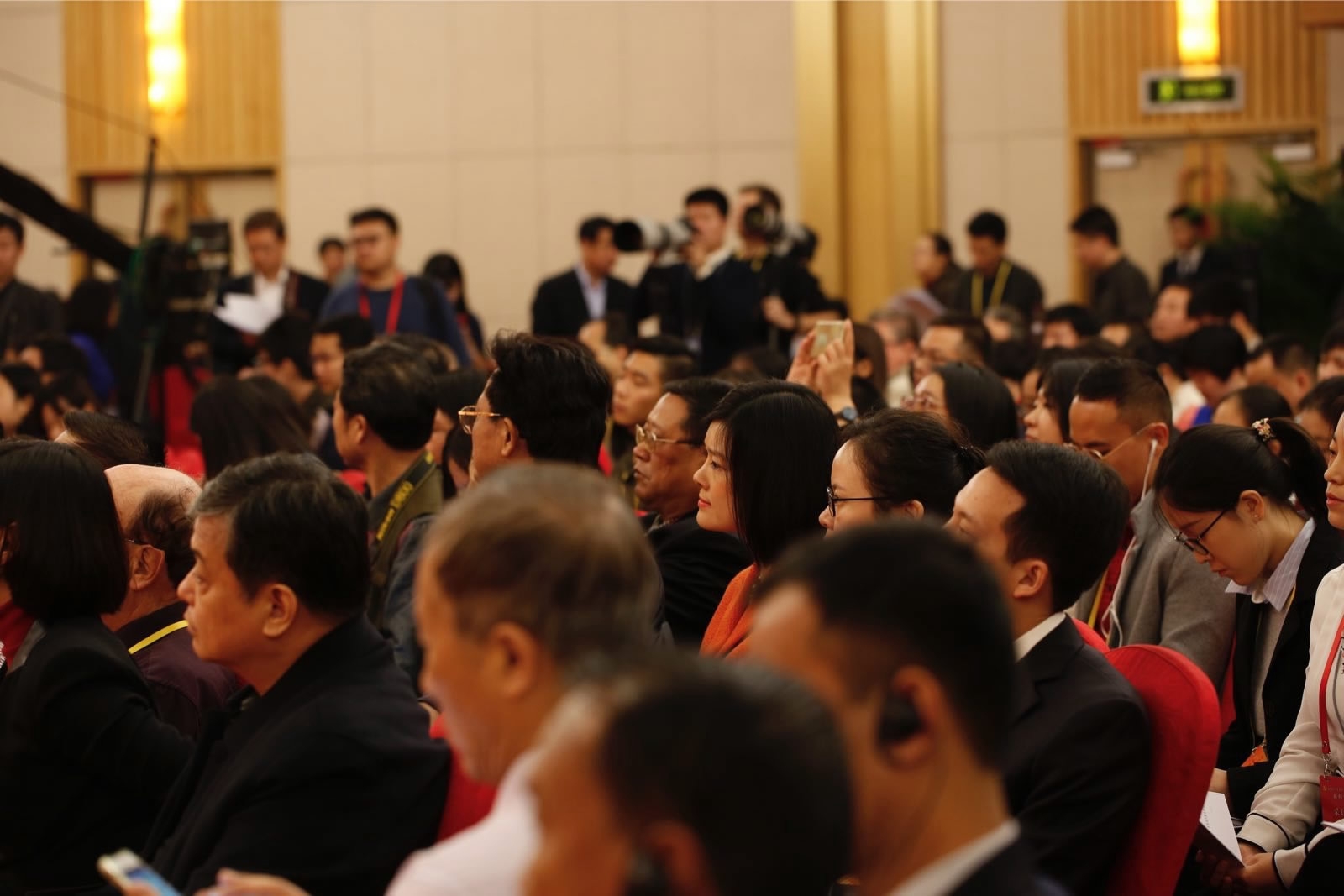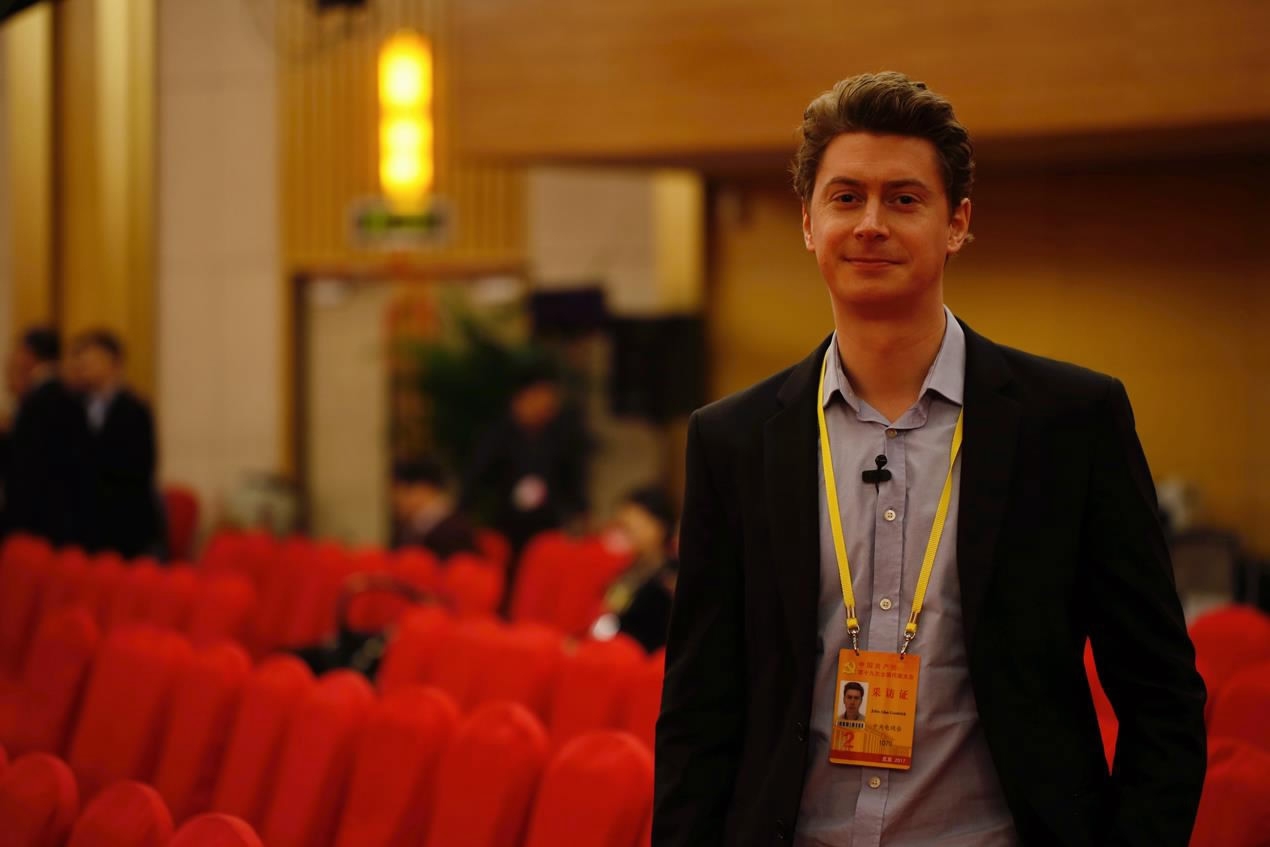
Culture
17:34, 20-Oct-2017
Five takeaways from the media and culture press conference
By John Goodrich

China’s media and cultural industries are thriving after five years of rapid growth, senior officials said at the second press conference of the 19th National Congress of the Communist Party of China (CPC) on Friday morning.
Here are five highlights from a wide-ranging briefing that covered China’s booming cultural sector, theoretical education, soft power, and the growth of the TV, film and online industries.
Leading the world
The most striking aspect of Friday’s briefing was the numbers: the astounding scale of growth – of almost everything cultural in China – since 2012.

The second press conference of the 19th National Congress of the CPC. /CGTN Photo
The second press conference of the 19th National Congress of the CPC. /CGTN Photo
The total value of China’s cultural industry increased from 1.81 trillion yuan in 2012 to 3.08 trillion yuan in 2016; the film and TV sectors generated combined income of 503.98 billion yuan in 2016, up 54.19 percent on 2012.
China is now the world leader in book publications, TV series, cartoon production, and emerging as a dominant power in online gaming and esports.
In 2016 alone: 772 domestic feature films were made; 334 TV series containing 14,912 episodes were aired; radio programs totaling 7.71 million hours were broadcast; TV programs totaling 3.52 million hours were screened; 500,000 titles of books were published; over 10,000 online dramas, films, cartoons and documentaries were made.

Reporters at the press conference of the 19th National Congress of the CPC. /CGTN Photo
Reporters at the press conference of the 19th National Congress of the CPC. /CGTN Photo
Booming film industry
The film industry is becoming “a highlight of China’s cultural development,” Zhang Hongsen, Vice Minister of the State Administration of Press, Publication, Radio, Film and Television, told journalists. It has the most cinema screens in the world, is third in the world in film production, and second in market scale.
He mentioned hits such as Wolf Warrior II and Operation Mekong as having an impact in China and globally.

The number of domestic cinema screens has increased from 13,000 in 2012 to 49,000 in 2016, Zhang said, while venture capital investors in the film industry increased from 500 in 2012 to over 2,000 in 2016.
Not all about money
Media organizations are often profit driven, but in China, cultural institutions are expected to meet both economic and social requirements.
In response to a question from CGTN’s Zou Yun, Sun Zhijun, Vice Minister of the Publicity Department of the CPC Central Committee, explained that culture has twin functions in China: Educational and recreational. He added “we cannot focus solely on market share, ratings, box office revenue… we should not enslave ourselves to the market.”
The “cultural and ethical” progress of the CPC was emphasized by Xia Weidong, Deputy Director of the Office of the National Steering Committee for Ethical and Cultural Progress. He also stressed the role of the Party in promoting and implementing Xi Jinping Thought on Socialism with Chinese Characteristics for a New Era.
Increasing soft power

China’s cultural influence has been used to effectively promote its image overseas, Sun Zhijun said.
Cultural cooperation agreements have been signed with more than 700 cultural executive programs and 157 countries and regions, while film partnerships have been signed with countries along the Belt and Road routes as well as China-Africa project.
Sun praised China’s “cultural soft power” and emphasized that concerted efforts had been made “to expound China’s concepts, systems and solutions and tell the stories of Chinese people, enterprises and brands.”
Media convergence
Media convergence isn’t part of everyday lexicon yet, but it was a buzz phrase during the press conference.

CGTN Digital's reporter John Goodrich attend the press conference. /CGTN Photo
CGTN Digital's reporter John Goodrich attend the press conference. /CGTN Photo
“The development of traditional and new media has converged, and internal reform of news media outlets has been deepened,” Sun said. “The same content can be developed into different products and values added one after another,” Zhang added.
CGTN’s coverage of the 19th CPC National Congress has featured numerous examples of the concept in action: From the seamless merging of online and TV streams, to the repurposing of original documentary footage for an array of platforms.
7km

SITEMAP
Copyright © 2018 CGTN. Beijing ICP prepared NO.16065310-3
Copyright © 2018 CGTN. Beijing ICP prepared NO.16065310-3